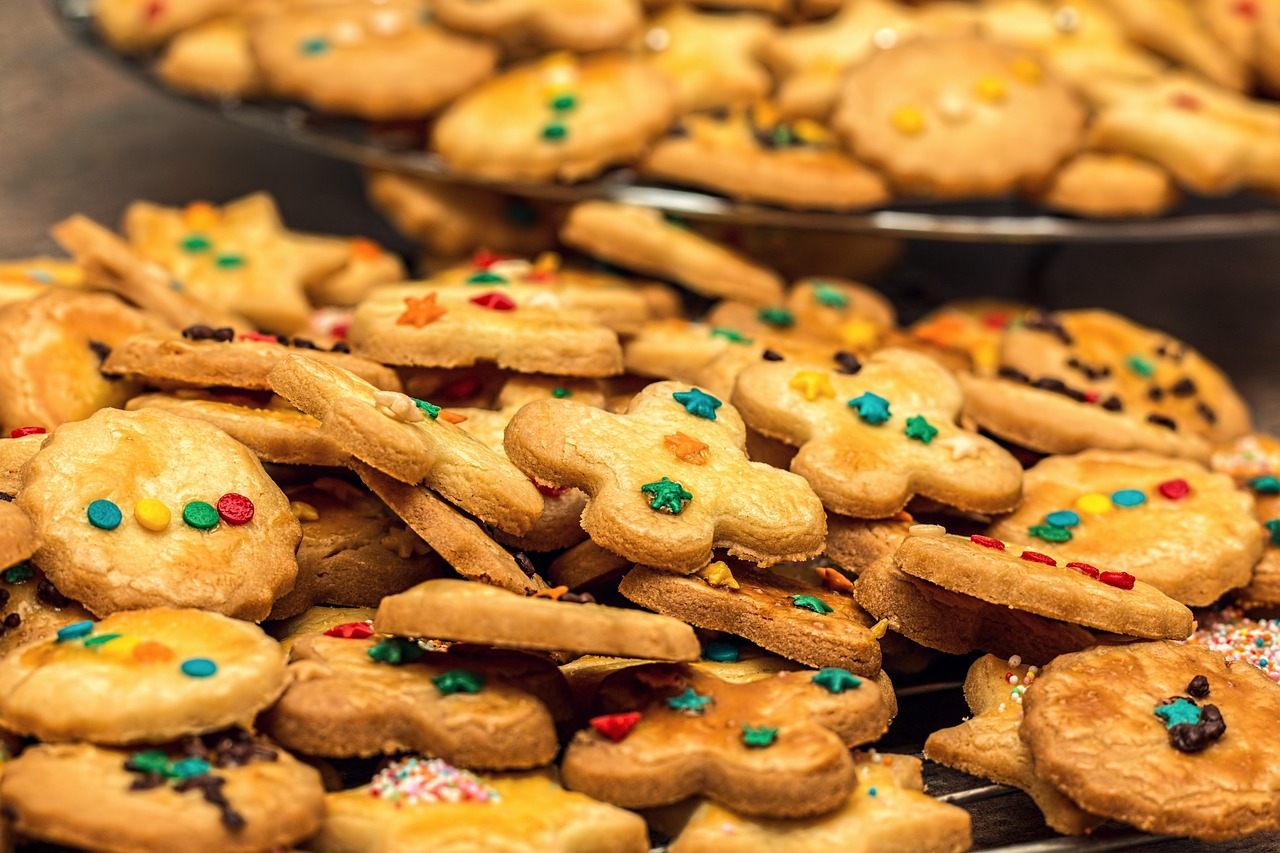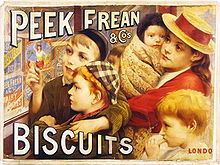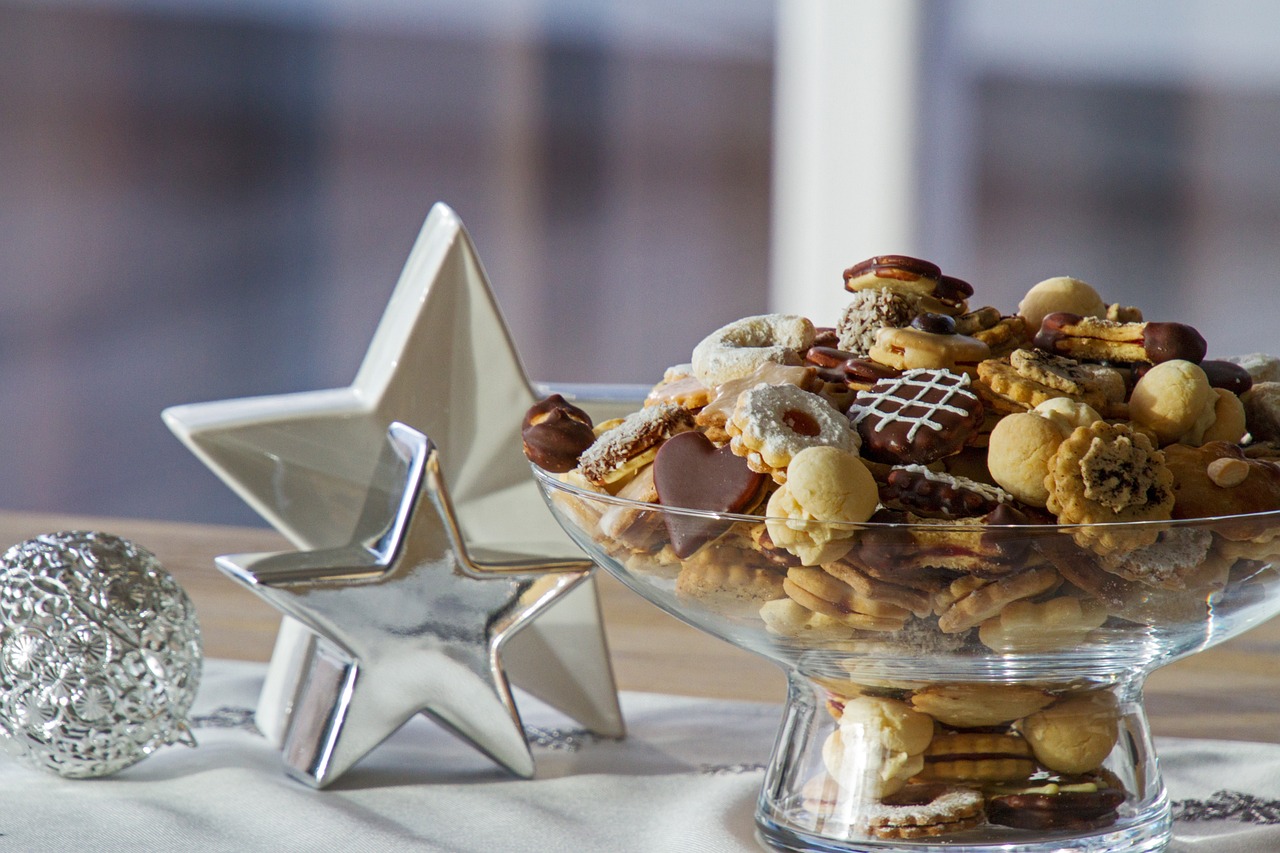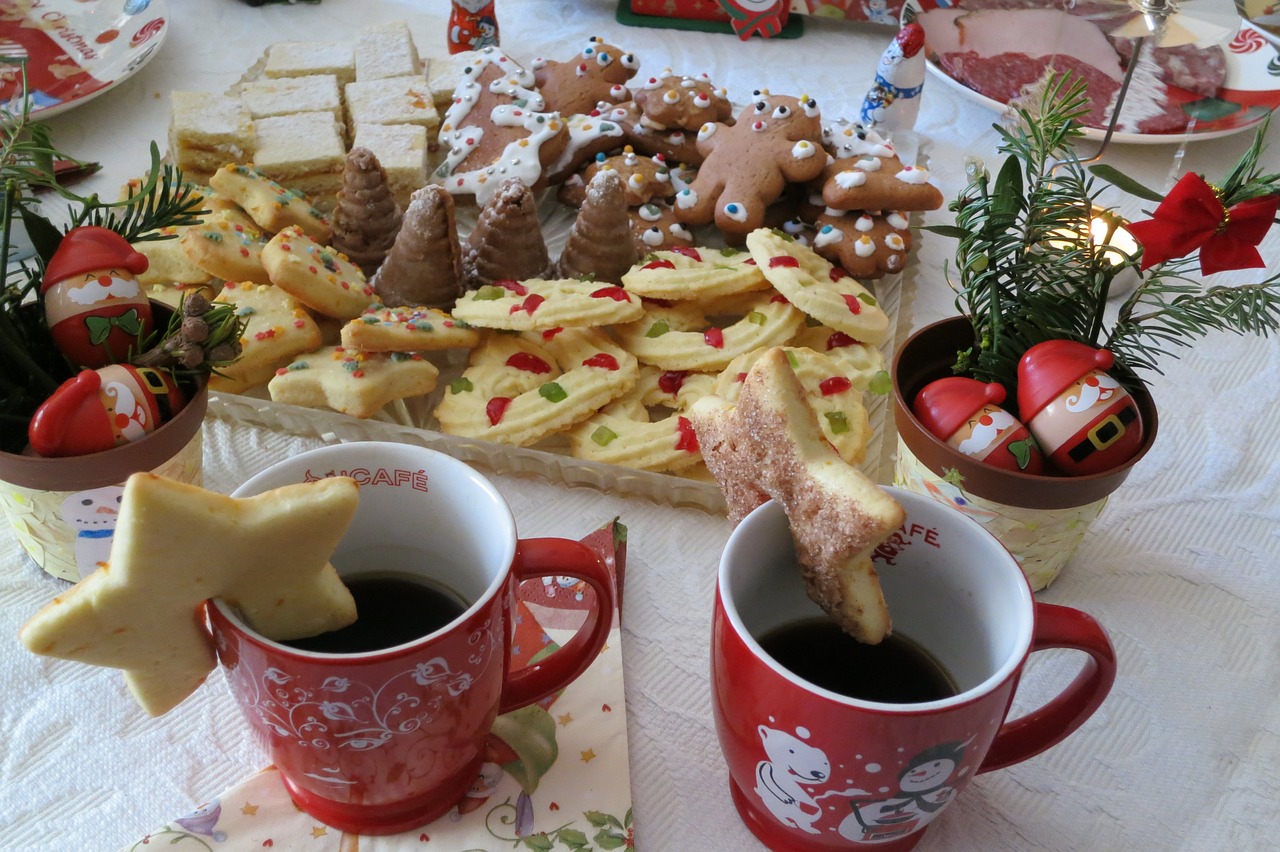Introduction
Biscuit is a staple snack in most places; it is savoury or sweet, crunchy or crumbly, and can be served anytime. A gooey cookie for dessert or during a cup of rich tea, biscuits are the ideal bite-sized pick-me-ups at any time of day. After all, everyone loves biscuits because of how versatile they are. They may be eaten warm or cold, sweet or savoury, and with breakfast, tea, or dinner. They also have a faint but distinctive flavour. Biscuits are the most popular snack and simple food item everyone knows about, whether with a regular evening teatime or to satisfy hunger pains. But only some are aware of the available several biscuit varieties. It is without doubt that only some people are familiar with these biscuit types. This article will explore the delectable world of biscuits and expand the reader’s knowledge about these delicious treats.
What is Biscuit?
The word “biscuits” is derived from a Latin verb that means “to cook twice” or “to boil twice.” Traditionally, biscuits were baked twice, once in a slow oven and then dried. Thus, the name. The same is true with biscuits, which can be made with a few ingredients and served hot or cold. Additionally, you can have them for breakfast, lunch, a midnight snack, or a late-night snack. You can also add cheese, sausage, jam, or butter syrup. Whatever the approach, it is a staple food because of its adaptability.
Biscuits are just small, flat dough baked with less moisture than other pastries. Like this, there are two sorts of biscuits: hard and soft. The firm dough category, which includes a variety of biscuit kinds, puff pastry cookies, and semi-sweet variants, is delectable and unsweetened or slightly sweet. In addition to having little to no sugar, the fat content rarely rises above 22.0% of the flour content unless it’s a puff pastry.
All sweet biscuits, whether they are basic biscuits, shell biscuits, or brooks such as ginger, are included in the soft dough group. While there are many similarities between soft and hard biscuits, yeast dough, puff pastry, and semi-sweet pastry are the three main categories for hard biscuits. They are popular because everyone may select their preferred flavour from several sorts of biscuits. They can also be steamed, baked, or fried. It is significant to note that while biscuits are often soft in the US, they are typically hard in the UK.
Brief History of Biscuit
Although there is various information and tales about how the biscuits have changed, there is yet to be conclusive or accepted proof of their origin. Many people think that biscuits have always been a part of English and French cuisine; however, given the greater availability of ingredients and their current popularity, the 17th century is when they began to gain popularity. The early varieties are more flat, crisp, and broad for longer-lasting satisfaction, especially for travellers and warriors. However, as technology advanced, they underwent significant change and were frequently consumed as snacks and for pleasure.
1. Earliest Story of the Origin of Biscuit
In the Neolithic age, the earliest foods we may name biscuits were likely baked on stones. However, the shape that cooked grains took—cakes, porridges, or flat, crisp biscuits—is not entirely revealed by the archaeological remains of cooked grains. The word “biscuit” is derived from the French word “bis-quit,” which has a Latin origin: panis biscotus denotes bread cooked twice. The Romans undoubtedly had a type of biscuit, what we now refer to as a rusk, which was essentially bread that had been re-baked to make it crisp. It was helpful for travellers’ rations and soldiers’ rations since it lasted longer than ordinary bread.
This extremely dense, dry biscuit was a longtime favourite of sailors and soldiers. Soldiers’ biscuits under the reign of Louis XIV were referred to as “stone bread.” Later, biscuits that had been “animalized” appeared. They were considered exceptionally nutritious because they employed beef juices as the liquid. Traveller’s biscuits in the 19th century were hard cakes that were preserved well when covered in a type of tin foil.
2. The Medieval Biscuit
By the fourteenth century, the word “biscuit” had entered the English language, and its meaning had expanded. Both savoury and sweet twice-baked biscuits were still widely consumed. However, comparable forms to pancakes were also rising in popularity. Wafers, which were formed of a sweetened batter that was cooked over a fire and could be moulded or rolled as technology advanced, were one of the most famous medieval biscuits. These biscuits were enjoyable in addition to being functional. They were frequently used as a dessert after a meal, a function that biscuits would carry out far into the 20th century.
However, the traditional long-lasting savoury biscuits survived. They became a crucial component of naval supplies as shipbuilding skills developed and European populations spread worldwide. Sailors spent progressively more time at sea as the period of exploration gave way to the ages of conquest and colonization. Fresh food was taken aboard ships when available, although the ship’s biscuits and preserved meat served as the standard ration. The first example of a biscuit still existing dates to 1784 and is a ship’s biscuit. Their inedibility was well known, and they were so unbreakable that some sailors used them as postcards.
In the 17th century, changes in biscuits began. Sugar had previously been imported from the Near East, exceedingly expensive, and exclusively consumed by the wealthy. By the 1660s, Britain had established a colony in the West Indies, ushering in a dark period in world history. Although not the only European nation to engage in the slave trade, Britain had the most significant role. It established the plantation system in the West Indies and America. It created a sugar empire based on the suffering of people. Sugar’s cost decreased in Britain, and goods containing it became more affordable and widely available. The variety of biscuits increased, and more people began to eat them on various occasions.
3. Biscuit Evolve Over Time
A biscuit boom in the 17th century wasn’t just due to more accessible ingredient access. Food was experiencing a silent revolution due to Italian and French influences, and cooking technology was also evolving. The previous guild structure needed to be fixed, and the bakers’ guilds were powerless to prevent people from making biscuits at home. New biscuit varieties made their way into cookbooks. Macaroons combined meringues with nuts benefited from the enchanted qualities of a firm egg foam. Rice cakes demonstrated the value of flours other than ordinary wheaten flour, and gingerbreads, particularly in Germany, represented authentic regional identity. One of the most widely used recipes was for wiggs for breakfast and as an afternoon treat when dipped in chocolate.
The 17th century saw the introduction of three new beverages, including chocolate. Additionally introduced to Britain were coffee and tea, which contributed to the development of biscuits. Biscuits, along with some sporadic nibbling, were still mostly consumed as part of the dessert course up to the 18th century. But when tea gained popularity in British society, a brand-new tradition known as afternoon tea developed that included biscuits. Savoys and ratifias, two biscuits later emerged into larder mainstays in Britain, were also created in the 18th century. The former, frequently cooked in long tins and known as ladyfingers in the 20th century, were highly crisp and had an almond flavour.
By the nineteenth century, biscuits were widely consumed. There was a type for every occasion, and they were simple to manufacture at home. The middle and upper classes ate multi-course dinners and finished them for dessert, ice cream, fruit, and nuts. Wine biscuits, flavour-infused mini-meringues, macaroons, and the bewilderingly elusive petit four were all in style then. Petit fours, which translates to “small oven,” was the term given to the tiny, delicate biscuits that were shaped into beautiful patterns and baked in a low oven after other items that required a greater temperature were taken out. They were a traditional dessert biscuit that may be coloured occasionally, always ornamented, and flavour-infused with various ingredients.
Meanwhile, the popularity of snack biscuits increased as well. These biscuits were made of sponge, which was essential and went well with a cup of tea. Queen Victoria was known to have a big appetite for biscuits, with rice cakes, chocolate sponges, wafers, petits fours, and langues de chat among her favourites. By the end of the 19th century, mass production had developed because of two industrial revolutions in Britain. By the 1880s, companies could create biscuits for everyone thanks to electricity and steam power development. In the 1850s, gems, garibaldis, Osborne biscuits, the pearl, the Marie, and the first chocolate dessert became popular. Jacobs’ cream cracker debuted in 1885 and became a staple among savoury biscuits. Utilizing cutting-edge printing technology, numerous biscuit businesses created unique tins that rose in value as collectables.
4. The Biscuit of Today
Biscuits are very popular and common snacks at different times of the day. Biscuits have lost favour in recent years as sugar has come under scrutiny as a cause of health issues in the Western world. However, biscuits are small and should not be consumed one at a time. Making biscuits at home still brings happiness and comfort in trying times, just as it did during the Second World War when they served as a small but crucial consolation. They are gratifying to eat, come in countless variants, and are easy to make—most of us know at least the fundamentals—thanks to the success of shows like the Great British Bake Off. Even a 3D printer can be used to create them. Biscuits have a long and fascinating history, from their humble beginnings as practical food to the explosion of sorts and techniques in the 19th century. There is a biscuit for everyone, whether they prefer a pink wafer or a Jammie dodger, a digestive or a bourbon.
Classification of Biscuits
Biscuits come in several categories, from the nature, composition, ingredients’ qualities, and the type of dough.
1. Crunchy or Hard Biscuits
These gluten-containing biscuits have a thick, dense covering. They can also fill you quickly and are heavier than other biscuit varieties. These biscuits are created with stiff, dense, thick dough and contain good gluten.
2. Soft Biscuits
These biscuits have a smoother consistency that is more palatable and generally acceptable. They are both tasty and sweet. They are less dense and flat and weaker than their ancestors. Additionally, these cookies include more sugar and fat than the preceding variety. They are less dense, more balanced, and easier to shatter than the previous ones. These cookies contain more sugar and fat than the earlier variety.
3. Fried Biscuits
These are a variety of conventional versions of biscuits that were made using different methods. In this classification, the biscuit batter and flour should be fully fried. There are both sweetened and unsweetened varieties of this.
4. Sweet Biscuit
These unique varieties frequently have fillings like chocolate, almonds, fruits, honey, jam, and other ingredients created especially for them. These speciality biscuits within the more extensive range require more ingredients and time. They are typically consumed as unique dishes and snacks.
Types of Biscuit
The most popular and recognized varieties of the many sorts of biscuits will be further explored in this section of the text, along with their specifics. There are many biscuits that bakers will enjoy.
1. Rolled Biscuits
Rolled biscuits are one of the most common and traditional quick breads made with baking powder. The dough is often made with butter, eggs, flour, and sugar. It is rolled out, worked into rounds, and then baked. The flavour options are infinite, with a decent basic biscuit recipe. Prepare delicious added ingredients, such as chewy coconut and raisins for something more tropical or zesty lemon and orange for a fresh, invigorating flavour. Of course, a touch of cocoa is always a great touch. When dipped into a hot cup of tea, rolled biscuits have the ideal texture for dunking—they are firm enough to keep their shape yet soft enough to absorb the liquid.
The biscuit should be about double in height during baking. The crust should be crisp, even golden brown, and the interior should be light, fluffy, and soft. Straight sides and a flat top are characteristics of well-made biscuits. The sides have horizontal fissures that signify flakiness. These crumbly biscuits are made with rolled dough and neatly sliced to create that layered feel. Depending on how the dough is cut out, they come in various forms and can have sweetened or unsweetened flavours. The most popular sort of biscuits that we frequently see utilized during snack time are the rolled biscuits.
2. Drop Biscuits
Drop biscuits can’t be rolled like rolled biscuits since they are considerably softer. The biscuit dough’s inclusion with milk and moisture is the cause. As their name suggests, the dough is dropped onto baking pans to shape the drop biscuits. They are considerably flatter invariant and coarser in appearance, thickness, and texture. These are simpler to produce and are thought to have originated in the southern US. Evidence still needs to be conclusively established, though. These have some sweetness, but not enough for me to classify them as dessert.
Drop biscuits are created by ‘dropping’ a spoonful of damp dough onto a baking sheet rather than rolling them out and meticulously shaping them with a cutter, giving them a slightly rustic appearance than their rolled relatives. Drop biscuits don’t typically rise as high as other biscuits and have higher liquid content than rolled ones. They may appear a little harsher on the outside, but they are very tender and tasty within.
3. Scones
These cakey morsels, pronounced either “s-con” or “s-cone”, depending on how you pronounce it, are often prepared with a soft, hefty crumb to provide a pleasant texture. Scones are rich, buttery biscuits shaped like a sweet wedge and are frequently baked with cream and butter. Scones have a somewhat crusty brown top and a delicate, hefty crumb. Adding eggs can add flavour and rich colour, giving food a cake-like texture. Around the world, scones are already a well-liked variation of biscuits. They were first consumed as breakfast or tea alternatives in most of the world when first developed in ancient Scotland and Europe.
4. Shortcake
One of our favourite biscuit varieties is shortcake. Baking powder aids in the rise of this buttery treat, giving it a fluffy texture. Split shortcakes are frequently decorated with strawberries and whipped cream. Although shortbread doesn’t contain baking powder, it is comparable to shortcakes. Shortbread has a high-fat content due to the abundance of creamy butter, which gives it a fine, crumbly structure. Shortcake and shortbread biscuits taste great with fruit and cream or just dusted with a light sugar coating. Rich biscuits or scones serve as the base for shortcakes. With sweetened fruit, whipped cream, or ice cream on top, they can be split or served whole.
5. Wafer Biscuits
Wafers are flat cookie cookies with a crisp, soft, thin, and light feel first produced in Italy and Austria. These savoury biscuits are typically the sweetest; they go well with tea, coffee, and snacks. In the modern context, these dry biscuits are available in various tastes on the market, from vanilla to chocolaty flavours, frequently with a layer of cream-filled inside. They often come in bars with a rectangular shape. Wafer biscuits had become very well-liked in the gourmet food market.
6. Buttermilk Biscuits
These rich, buttery biscuits, which have Southern origins, are thick and indulgent, laden with buttermilk for a rich flavour, and flaky and delicate. A fermented dairy beverage called buttermilk is produced when butter is churned. Buttermilk gains a sour taste from fermentation, giving biscuits a new dimension. However, kefir and yoghurt occasionally serve as stand-ins. Even while buttermilk biscuits are delicious, a tiny sprinkle of melted chocolate may always make them better.
7. Fig Biscuits
Fig wraps, a type of biscuit, are an excellent example of how fruit fillings are just as good as cream filling and may be used in place of it. This treat has an Egyptian origin and is well-known throughout the world. This is a delectable cookie with figs that have been a staple food for a long time in various Arab nations.
8. Angel Biscuit
Angel biscuits can be an excellent alternative to test out if you’re seeking a biscuit variety to suit your morning breakfast and snack selections. These delectable ones are American and are produced with yeast, baking powder, flour, and baking soda. These biscuits are small, flat, and considerably fluffier and lighter, yet they rise while baking. The ones can be consumed with or without additional accompaniments and are light on the stomach and easy to digest. Although most of us don’t see Angel biscuits frequently in our daily lives, they are delicious and deserving of a try.
9. Ginger Biscuit
Ginger biscuits are a favourite treat and snack in England. The biscuits are created using ginger powder, as the name would imply, along with other baking essentials like flour, cinnamon, and nutmeg. Although they have a firm structure, these biscuits melt in the mouth and have a lovely, unsweetened flavour. They are crisp and crispy, making them the perfect accompaniment to tea or coffee as a snack.
10. Cookies
A much denser and thicker variation of biscuits is called cookies. Cookies are a type of sweet, tiny, chunky biscuit. Or, in America, the term “cookie” refers to what is now known as a “biscuit.” The name “cookie” derives from the Dutch word “koekje,” which means “small cake”; the cookies are a kind of bakery biscuits that may have a variety of fillings as well as flavours, as well as diverse structures within them. Cookies are satisfying snack food best enjoyed alone or even with other snacks, drinks, and tea.
Conclusion
Although they are a delicious treat, biscuits should only be consumed in moderation. There are a few biscuit qualities you can search for if you want to strive to keep healthy. Oatmeal cookies are more beneficial than other types of cookies. Oats made from whole grains have several health advantages. With an oatmeal cookie, you won’t be as tempted to keep reaching for the biscuit pan because its high fibre content keeps you fuller for longer. The meaning of “biscuit” varies depending on where you are. But in general, we think of them as being little, flat bits of baked pastry with little moisture.
The meaning of “biscuit” varies depending on where you are. But in general, we think of them as being little, flat bits of baked pastry with little moisture. Although the majority of current biscuits aren’t cooked twice, the term “biscotti” is derived from the Latin “bis cotus,” which means “twice-baked.” Sweet biscuits typically contain a basic mixture of flour, butter, eggs, and sugar. However, the ratios may change depending on the type. The same basic steps are used to make biscuits at home or in a factory: mixing, forming, baking, and cooling. You can see from the list that there are numerous sorts of biscuits from numerous civilizations worldwide. This also demonstrates how well-liked the pastry is across the globe.



